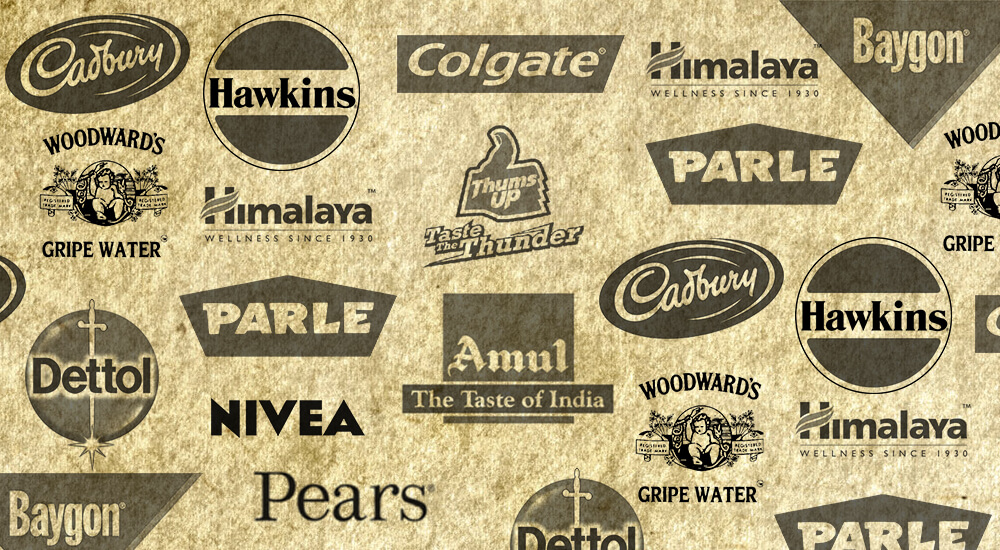Let's Talk
We would love to hear from you. Want to know more about our services or have any questions? Say Hi!
Our Own Heritage Brands

The smell of the brewing Bru filter coffee marks the beginning of the day in any typical Tamilnadu household. As the lady of the house pours the steaming hot coffee into steel tumblers, with the froth levelling up to the brim, the family members eagerly wait to jump-start their day with their daily dose of caffeine.
Miles apart in a typical Gujrati household you will see a couple enjoying their morning tea on a traditional swing in their verandah. The brand of the chai is usually the same across Gujrat as it has already found its place in the hearts of the people there – The Wagh Bakri Chai.
You may not notice the brand name when you see a yellow balm lying at the bedside of a senior citizen or a patient struck with viral fever. However, a lot of people who have been living in India for quite many years now can easily tell you it is Amrutanjan.
For more than a century now, the brand has become synonymous with pain balm and promises to do so for years to come.
There are more brands like these that have managed to become the heritage brands of India:
Milkmaid… Colgate Toothpaste… Pear’s Soap… Mysore Sandal Soap… Woodward’s Gripe Water… Farooqui Manjan… Hawkins Pressure Cooker… Himalaya Herbal Healthcare… Baygon’s Spray… Parle G… Thums Up… Nivea… Dettol… Cadbury… Amul and more…
They were launched decades ago; yet they remain to be incredibly successful even today.
So, what do you think is the secret behind this success?
It could be a Jingle (like that of Nirma)…. Logo (like that of Thums Up)… packaging (like that of Nivea)… or a Mascot (like the girl you see on the Parle G Wrapper) that could have created a lasting imprint on the minds of the consumers, helping them make the visual association between the product and the brand.
Nevertheless, there is one thing that has helped all these heritage brands maintain the trust and loyalty of their customers for years now – Quality. Any lapse on this front can cause massive damage to the brand name, which can be irreparable.
So, take a trip down the memory lane and try to recollect those brand names that have grown to be synonymous with India. Most of these started much before the independence, during those turbulent times, and have managed to survive the tough tests of time till date.
It is amazing how brands almost as old as a century now have remained to stay relevant and still manage to connect with people through generations.
It is very important to stay relevant to avoid brand fatigue. Your brand might have thrilled and inspired fond feelings inside your customers till now. Brand fatigue might reverse all that and damage your business forever if left unchecked.
Relationship between a brand and its customers keeps changing on a constant basis. Customers tend to get distracted and do away with their loyalties, every time a new brand comes up with a product that meets their expectations. Brands that fail to keep up with the changing needs and habits of the market end up getting dumped inevitably.
Remember Kodak? It was a giant of its industry a decade ago until it lost its relevance, stopped innovating and became complacent. If it had adapted itself to the digital age back then, it would probably be enjoying a stronger market position today.
Brands need to renew their offerings and come up with product extensions to survive the competition and maintain its position in the market. Doing this too frequently might make you end up alienating your loyal customers. Instead, what you need to do is, find out what your customers want and innovate according to their requirements.
While heritage Indian brands like Nivea believe in coming up with brand extensions that can increase their sales, there are others like Thums Up that have managed to retain everything by changing their brand ambassadors.
Dettol has always managed to associate itself with its core value – hygiene. By leveraging this core quality in all its products, Dettol has made it easy for its consumers to associate the brand with a specific image.
Bata has recently seen a major increase in its turnover by making some changes to its design and retail. Most Bata users would be surprised by the fact that this ‘sasta and tikau’ footwear brand is not actually an Indian brand but a Czech brand.
Rooh Afza, the classic summer ‘sharbat’ has managed to survive the India-Pakistan Partition, the Licence Raj and the competition from the tetra packs and carbonated drinks. The brand has now been working towards changing its image from a family summer drink into an all-season drink that will attract the youth of India.
Parle G recently came up with its “Bharat Ka Apna Biscuit” campaign to bring back memories of its origin and to strengthen its position one of the most loved homegrown brands of India. While highlighting the achievements, contributions and innovations of young Indians in various fields, this campaign focuses on certain things that have remained constant for ages now – the blue sky, the waves in the sea, the patriotism of Indians and Parle G – the all-time favorite biscuit of Indians.
All the above brands managed to make it to the top and still remain there as of today. They have had excellent support from their top management. They had amazing brand strategies in place. Most importantly they managed to connect with people.
If there is someone who knows it all, it is your customers. They know what they want to eat, where they want to go, what they want to buy and how they want to shop for it. All your brand decisions need to be taken based on the insights you receive from your customers.
It is time to put up a system in place that will help you engage with your customers, connect with them and listen to their opinions, in case you have not already done so.


